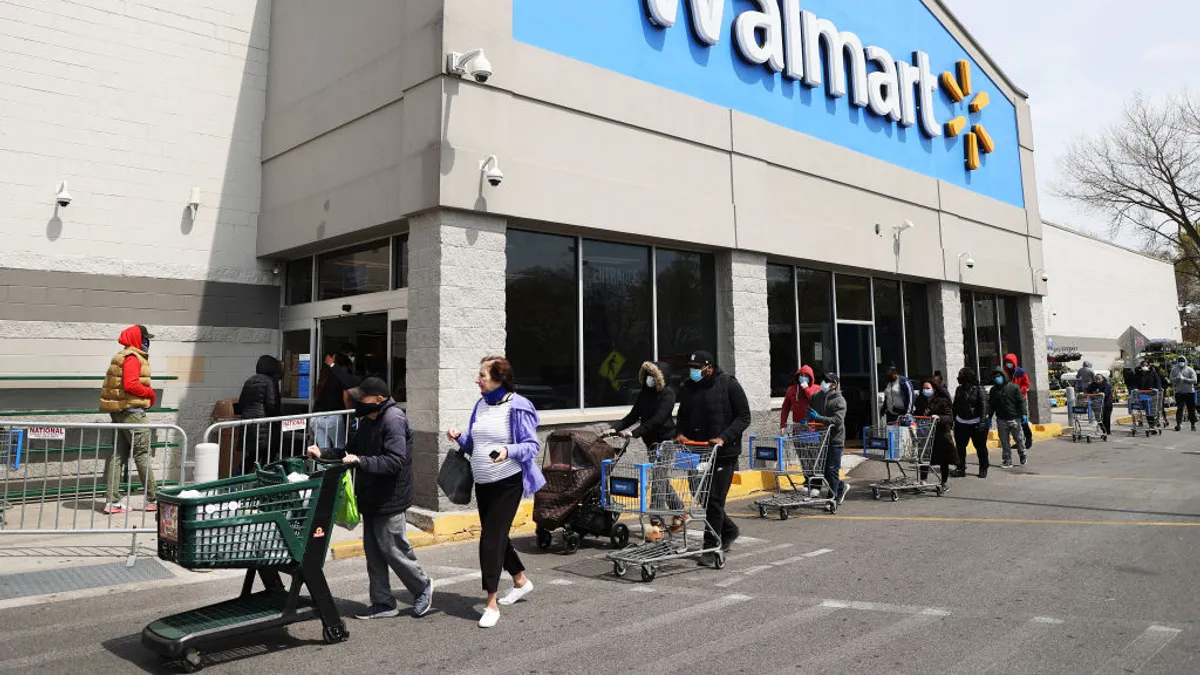Dive Brief:
- Grocery shoppers are increasingly gravitating to Walmart, with the percentage of consumers saying they purchase food from the retailer rising to 75% in 2021, up from 71% in 2020 and 57% three years ago, research firm TABS Analytics reported last Thursday.
- Three-quarters of consumers in the poll of approximately 1,000 adults, which was conducted earlier this month, said they shop regularly at traditional grocery stores, a figure that was down from 79% in 2020 but consistent with recent years, where it fluctuated between 73% to 77%.
- Walmart has also cemented its position as a leading player in grocery e-commerce and is now well ahead of rival Amazon, according to the research firm's survey.
Dive Insight:
Walmart's continuing rise as a destination for grocery shoppers has come at the expense of a host of rivals, TABS' research found. The retailer has grabbed market share during the pandemic as traditional grocery stores, natural food sellers and Costco have seen their popularity decline among the subset of consumers surveyed by the firm.
People are also showing increasing interest in shopping at Aldi, with the German discounter seeing more shoppers than the entire natural foods segment, TABS found. Meanwhile, Amazon-owned Whole Foods slipped to a 13% share — 2 percentage points lower than where it stood two years ago.
The survey also found that Amazon has lost ground to Walmart on the grocery e-commerce front even as it dominated online shopping overall — a trend TABS also noted in its survey last year, which Amazon disputed. Amazon logged 21% of the online grocery transactions among participants in the research, down from 32% in 2020. Walmart also saw its share erode from the previous year, but at 32% of grocery e-commerce purchases, the retailer is markedly ahead of Amazon.
Amazon’s weaknesses stem in part from the fact that it doesn’t have as large a pickup footprint as the competition and is heavily dependent on its Whole Foods chain, which has lagged behind the overall grocery market, Kurt Jetta, TABS' president and chief analytics officer, said during a webinar presenting the findings on Thursday. In July, Amazon reported that sales at its physical stores, which include Whole Foods, were up 11% during the second quarter, indicating that consumers have been returning to those locations, but didn't indicate how much the grocery chain accounts for the uptick.
Traditional grocery stores also saw their portion of the online grocery market fall. Those retailers garnered 15% of the sector's e-commerce transactions, down from 18% in 2020.













